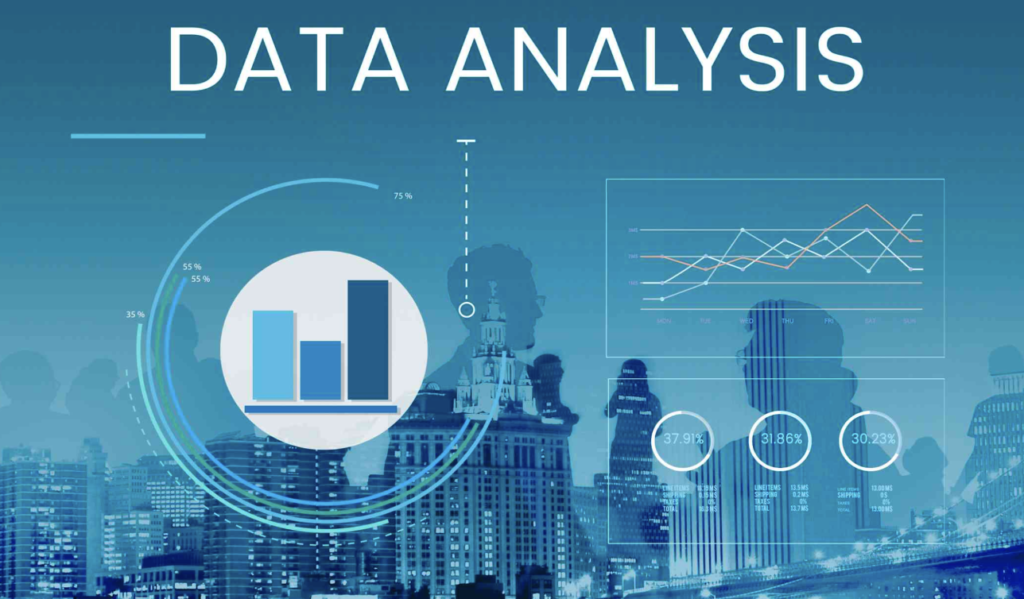As we forge ahead into the digital marketing age, data analytics and insight have become invaluable tools for businesses intending to make their mark online. But what exactly are they and insight, and how can they propel your business towards success? Let’s delve into this subject and illuminate and shed light on the importance of data analytics and insight for digital marketing.
“Data analytics and insight are the compass and map in the digital marketing landscape. They guide businesses towards success by helping them understand their audience, track their progress, and make informed decisions”.
1. What is Data analytics?

Understanding the complex world of data can be a bit daunting. But fret not, let’s start with the basics. Data analytics is a term that you may have come across quite frequently, especially in the context of digital marketing. But what exactly is it?
At its core, data analytics uses systematic computational analysis to discover, interpret, and communicate meaningful patterns in data. With the advent of digital technologies, data analytics has become increasingly important as it allows businesses to make data-driven decisions.
Data analytics can be broadly classified into four types:
- Descriptive Analytics: It deals with what has happened in the past.
- Predictive Analytics: It gives insights into what could happen in the future.
- Prescriptive Analytics: It provides recommendations on what action to take to eliminate a future problem or take full advantage of a promising trend.
- Diagnostic Analytics: It focuses on why something happened.
In conclusion, the different branches of data analytics serve unique roles in steering effective decision-making within organizations. The ultimate goal of these various forms of analytics is to transform raw data into actionable insights.
2. What is insight?
In the realm of data analytics, the term ‘insight’ holds a significant position. But what is insight?

Insight represents an accurate and deep understanding of a particular aspect, subject, or situation, derived from the analysis of data. Simply put, it refers to the valuable information extracted from data that can influence decision-making processes.
Insight is not automatically derived from the raw data. Instead, it’s the result of the following process:
- Data Collection: Gathering relevant data from various sources.
- Data Processing: Cleaning and organizing the collected data to make it suitable for analysis.
- Data Analysis: Applying various analytical techniques to identify patterns, correlations, and trends within the data.
- Data Interpretation: Making sense of the results obtained from the data analysis to generate actionable insights.
Through these processes, raw data is transformed, making it digestible, understandable, and ultimately, insightful. Remember, the objective is to make the raw data talk—and talk in a manner that adds value to your organization or research and leads you to conclusive insights.
3. Why are data analytics and insight important for digital marketing?

When it comes to digital marketing, understanding your audience is key. Data analytics and insight enable you to delve into your customer’s behavior, preferences, and needs. But why are they so crucial for digital marketing?
In the dynamic world of digital marketing, data analytics, and insight play a pivotal role in bolstering your strategies and driving your success. Let’s break it down into three key areas:
- Customer Understanding: With data analytics, you can gain deep insights into your customers’ behavior, preferences, and needs. This granular understanding allows you to tailor your marketing strategies to meet these needs effectively.
- Performance Measurement: Data analytics allows you to measure the performance of your marketing campaigns with precision. By understanding what works and what doesn’t, you can optimize your strategies for better results.
- Trend Prediction: Data analytics can help predict future trends and consumer behaviors. This foresight allows you to stay ahead of the curve and adapt your marketing strategies accordingly.
The three pillars of data analytics illuminate various facets of your target demographic and marketing performance. They provide the critical knowledge needed to develop effective digital marketing strategies. By leveraging these areas of data analytics, you have the opportunity to stay proactive, make informed decisions, and ensure your campaigns’ effectiveness in the ever-changing landscape of digital marketing.
The top three Impacts of Insights:
- Strategic Decisions: Insights help drive strategic decisions by providing actionable information. They help you prioritize your actions based on real data.
- Customer Engagement: Insights can help you engage your customers more effectively. By understanding their needs and preferences, you can create personalized experiences that resonate with them.
- Competitive Advantage: Insights give you a competitive edge by revealing opportunities and threats in your market. Armed with this information, you can make informed decisions and stay ahead of the competition.
In this era of data-driven decision-making, gaining insights is more than a luxury – it’s a necessity. These insights pave the way for your organization’s strategic decisions, steer improved customer engagement, and fuel your competitive advantage. The power of insights culled from data analytics allows you to shape your actions based on actual, real-life data, rather than speculation.
In the world of digital marketing, data analytics and insight are not just important – they are essential. They provide the knowledge, understanding, and direction needed to navigate the complex digital landscape and ultimately, drive success.



